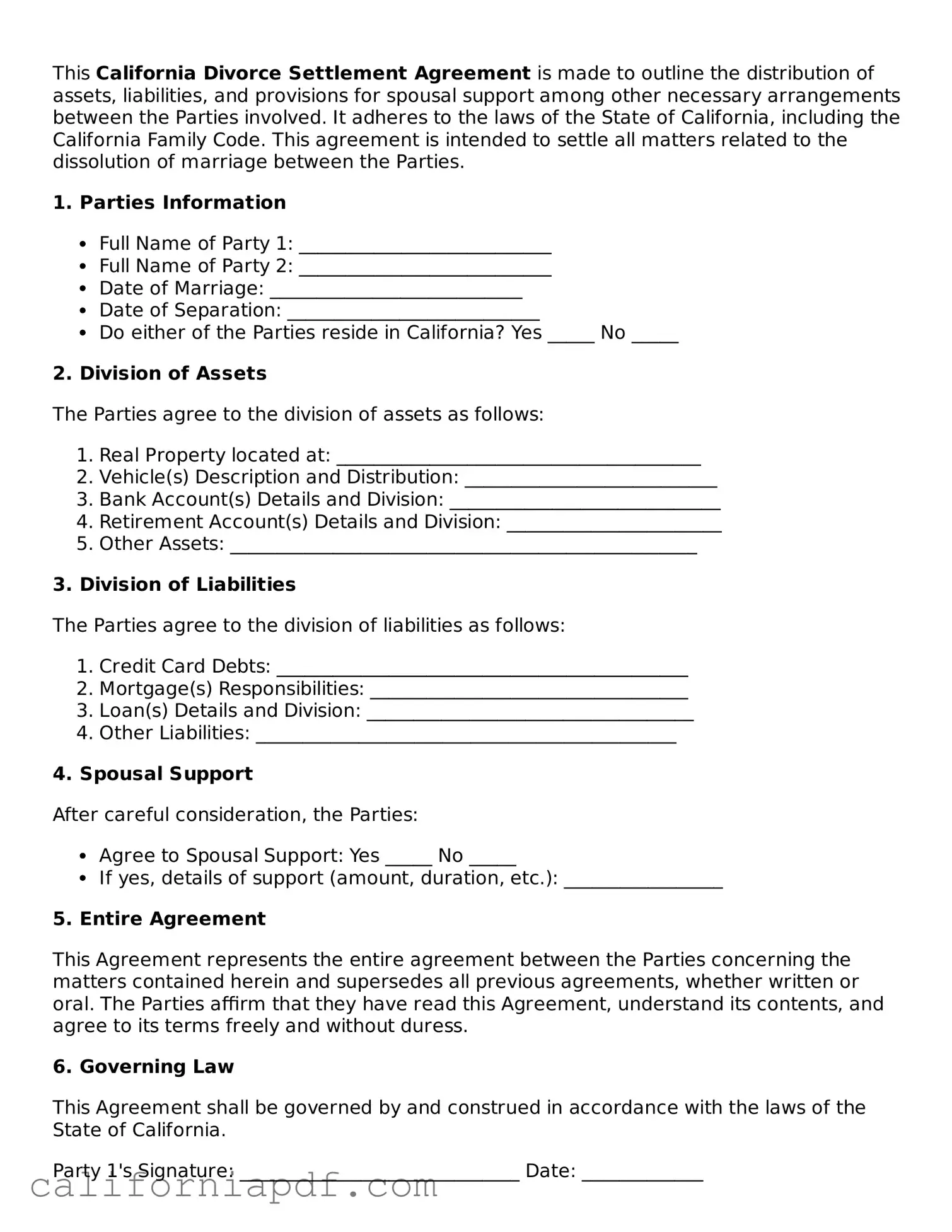The California Divorce Settlement Agreement shares similarities with the Marital Settlement Agreement (MSA), as both outline the terms concerning the division of assets, debts, spousal support, and, if applicable, child custody and support arrangements between divorcing spouses. These agreements serve as a comprehensive record of the decisions made by the parties involved, often streamlining the finalization of the divorce process.
Similar to a Separation Agreement, the Divorce Settlement Agreement provides a framework for couples who are considering a separation but are not yet ready to legally divorce. While separation agreements might not always lead to divorce, they contain provisions that are quite similar, detailing how assets, liabilities, and other marital issues will be handled during the separation period.
The Property Settlement Agreement (PSA) is another document that bears resemblance to the California Divorce Settlement Agreement, focusing primarily on the distribution of property and assets owned by the divorcing couple. Both documents aim to reach a fair division of marital property, ensuring a clear agreement is in place to minimize conflicts.
A Postnuptial Agreement, fashioned after marriage to address how assets and financial issues should be managed upon divorce, shares key elements with the Divorce Settlement Agreement. Although created under different circumstances, both documents ultimately serve to delineate the division of assets, responsibilities, and arrangements post-separation or divorce.
The Pre-Divorce Agreement is a proactive measure taken by some couples, anticipating potential issues in the event of a divorce. It parallels the Divorce Settlement Agreement in its purpose to outline how assets, custody, and other matters would be settled, acting as a precursor to a formal divorce settlement.
Custody Agreements are specialized documents focusing on the terms regarding the care and upbringing of children within the context of divorce or separation. While a Custody Agreement specifically addresses issues related to child custody and visitation schedules, it is often integrated into the broader scope of a Divorce Settlement Agreement when children are involved.
Spousal Support Agreements, focusing on the financial support from one spouse to another during or after a divorce, share similarities with portions of the Divorce Settlement Agreement addressing alimony. Though Spousal Support Agreements can stand alone, they are frequently a part of the comprehensive divorce settlement to ensure financial fairness and stability.
Debt Settlement Agreements, while generally used to negotiate the settlement of debts with creditors, bear resemblance to aspects of the Divorce Settlement Agreement concerning the division and assumption of marital debts. Both types of agreements work towards a fair resolution of outstanding financial obligations among the parties involved.
The Co-Parenting Agreement is often an element within a Divorce Settlement Agreement where children are concerned, focusing on the shared responsibilities of raising and making decisions for the children post-divorce. It aims to establish a cooperative parenting arrangement, detailing everything from daily routines to how future disputes will be resolved.
Finally, the Financial Affidavit, while not an agreement, is closely associated with the Divorce Settlement Agreement process. It provides a detailed account of an individual’s financial situation, including income, assets, and liabilities, and is essential in negotiating a fair divorce settlement, particularly regarding alimony, child support, and asset division.
